If you’ve ever heard your child say, “I will going to the park tomorrow” — don’t panic. You’re not alone. And more importantly — it’s fixable. In fact, it’s fun to fix.
At Learnlink, we’ve helped many children across Europe and beyond master the future tense without tears, worksheets or pressure. How? By turning grammar into games, stories and real-life moments they actually care about.
This guide is your shortcut. Whether you’re a parent helping at home or a teacher looking for fresh ideas — you’ll find everything here to make “will” and “going to” stick. Fast.
And yes — we’ve included a free downloadable practice pack at the end. No email required. Just click and go.
Let’s begin.
What Is the Future Tense in English?
In English, we don’t have one single “future tense” like we do with the past (I played) or present (I play). Instead, we use different structures to talk about things that haven’t happened yet.
The two most common?
- Will
- Going to
They might look similar. They might even feel interchangeable. But subtle differences matter — especially when we’re helping children speak naturally and confidently.
Why Do We Need Future Tense?
Because life doesn’t happen only in the now.
Children plan sleepovers. They predict rain. They promise to tidy their rooms (eventually). They decide, on the spot, that they’ll eat broccoli today (…maybe).
The future tense helps them express all of that — clearly, correctly, and with growing confidence.
Without it? They’re stuck in the present. And that’s no fun at all.
Two Ways to Talk About the Future: Will and Going to
Think of “will” and “going to” as two friendly tools in your child’s language toolbox.
- “Will” = for things we decide now, predict, or promise.
- “Going to” = for things we’ve already planned or can see coming.
Simple? Yes. Powerful? Absolutely.
When to Use “Will”
“Will” is your go-to helper when talking about the future in a spontaneous, hopeful, or helpful way. Whether your child is making a snap decision, offering to help, or guessing what might happen — “will” is the word that makes it sound natural and confident.
But first — let’s make sure you (and your child) know exactly how to build it. It’s simpler than you think.
How “Will” Is Formed — The Structure
Subject + will + base verb (infinitive without “to”)
Quick Reference Table: “Will” in Action
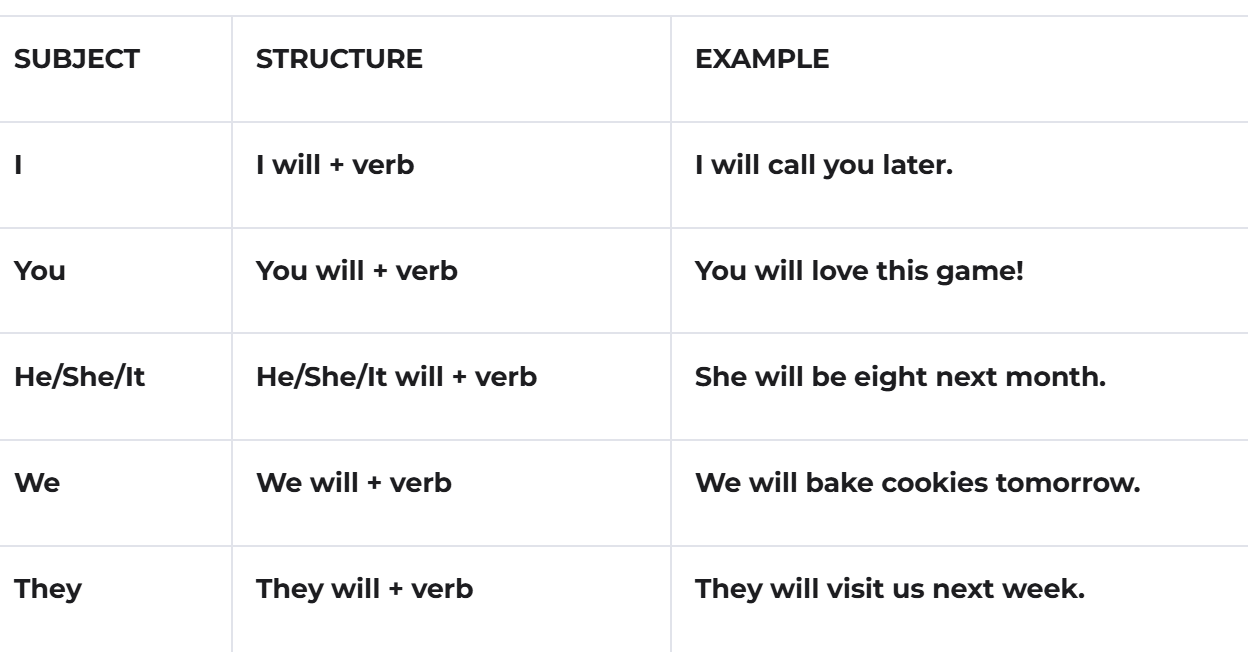
We use “will” when we’re talking about:
Making Predictions
- “I think it will rain tomorrow.”
- “She will win the race — she’s so fast!”
No plan. No schedule. Just a guess — based on what we know or feel.
Tip for parents: Play “Weather Forecaster” at breakfast. “What will the weather be like today?” Let them guess — and use “will” every time.
Promises and Offers
- “I will help you with your homework.”
- “I will share my sweets with you.”
Kids love making promises (even if they forget them five minutes later). Use that! Turn it into language practice.
Quick Decisions
- “Oh no — I forgot my shoes! I will go back and get them.”
- “This cake looks delicious — I will have a slice!”
These are decisions made in the moment. Not planned. Not scheduled. Just… decided.
Classroom trick: Role-play surprise scenarios. “The zoo is closed! What will you do now?” Watch how naturally “will” slips in.
When to Use “Going to”
“Going to” is the future tense your child will use most often in daily life — for plans they’ve thought about, things they’re excited to do, or events they can clearly see coming. It’s the grammar of calendars, shopping lists, and “Look what’s happening!” moments.
How “Going to” Is Formed — The Structure
Subject + am / is / are + going to + base verb
Quick Reference Table: “Going to” in Action
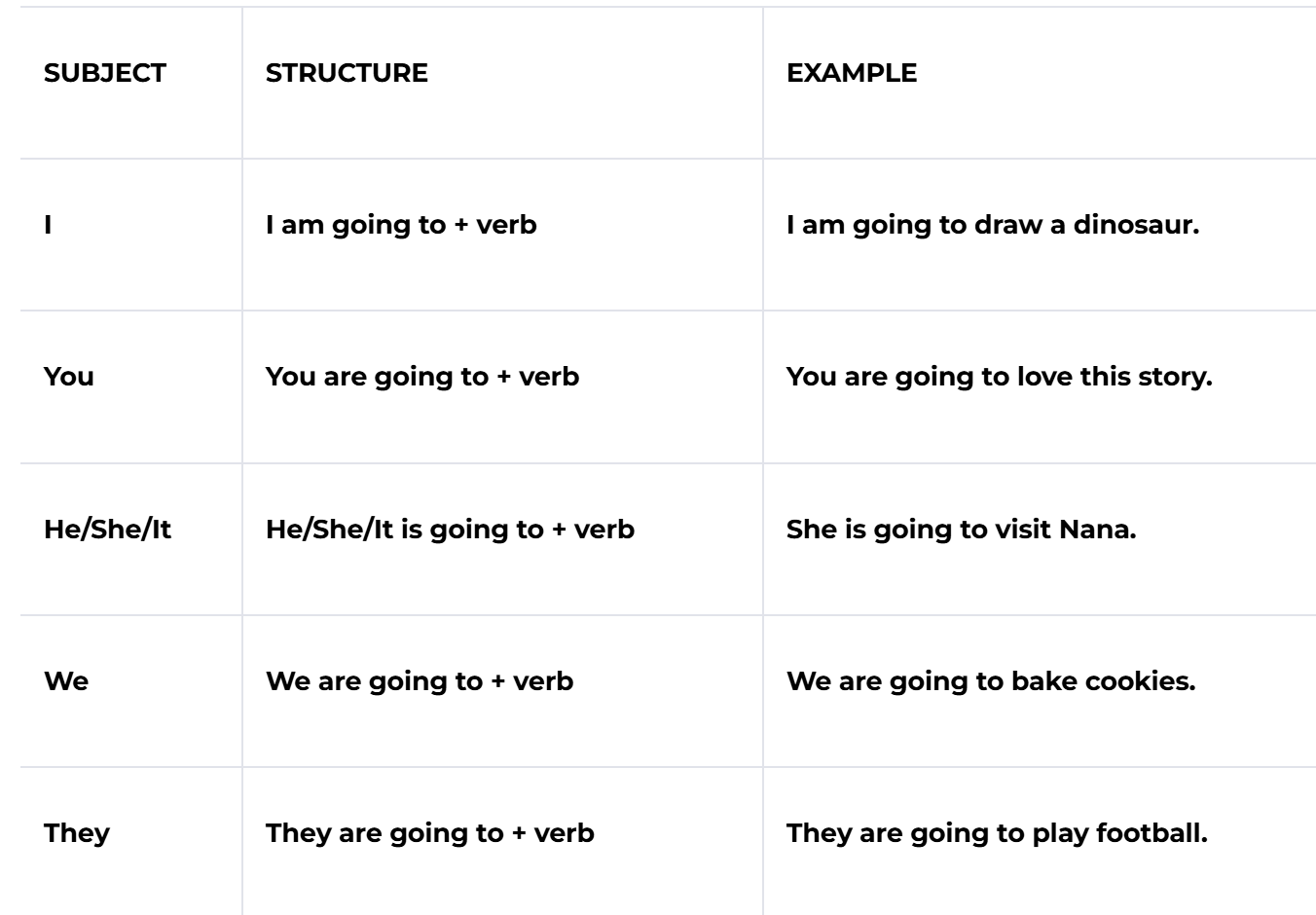
Now, let’s talk about plans. The things we’ve thought about. The things we can see coming.
Planned Actions
- “We are going to visit Grandma on Saturday.”
- “I am going to build a Lego castle after lunch.”
These aren’t guesses. They’re on the calendar. Or at least, on the fridge.
Parent hack: Use a whiteboard. Write the weekend plan together — and make sure every sentence starts with “We are going to…”
Predictions with Evidence
- “Look at those dark clouds — it is going to rain!”
- “He’s running so fast — he is going to win!”
Here, we’re not guessing blindly. We’re using what we see to predict what’s next.
Game idea: Watch a video clip (cartoon, sports, cooking) on mute. Pause it. Ask: “What is going to happen next?” Let them explain — using evidence.
Will vs Going to: Side-by-Side Comparison
Still unsure? Let’s put them next to each other.
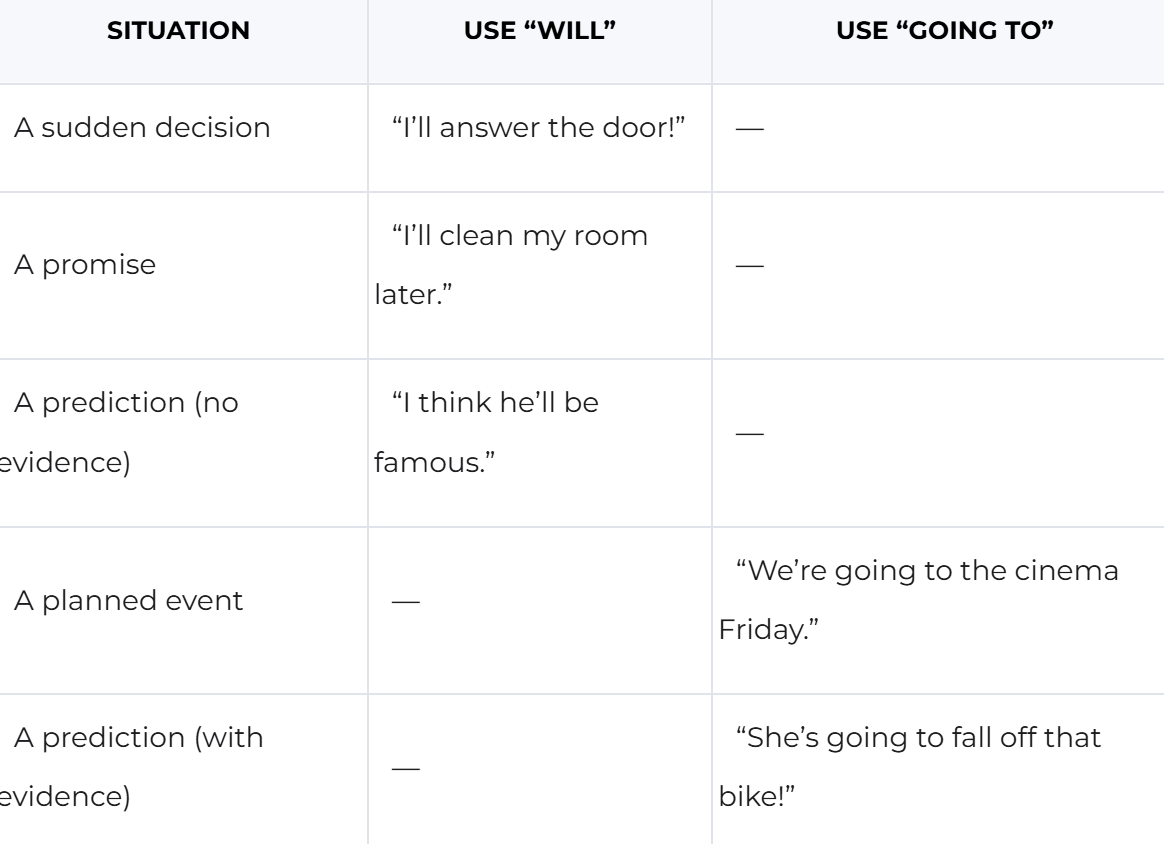
Key Differences at a Glance
- “Will” = spontaneous, promises, guesses.
- “Going to” = planned, visible, scheduled
Remember that. Write it on a sticky note. Stick it on the mirror.
Common Mistakes Kids Make
“I will to go” → Wrong.
“I am going to play” → Correct.
“I going to eat cake” → Missing “am”.
“I am going to eat cake” → Perfect.
“I will going to…” → Nope. Pick one!
Don’t correct every mistake. Just model the right version back. “Oh, you’re going to eat cake? Lucky you!”
Fun Examples for Kids
Let’s make this real. Here’s how “will” and “going to” sound in everyday life.
Everyday Situations with “Will”
“I will call you when I get home.”
“Dad says he will fix my bike tomorrow.”
“I will be eight next month!”
Everyday Situations with “Going to”
“We are going to bake cookies after school.”
“Look — the dog is going to jump in the pool!”
“I am going to wear my red shoes to the party.”
Try this: Record your child saying 5 sentences about tomorrow — 3 with “will”, 2 with “going to”. Play it back. Celebrate every correct one.
Try It Yourself — Free Practice Pack for Your Child
We’ve made this easy for you.
Download our FREE “Will or Going to?”
Practice Games and Activities
Learning sticks when it’s playful. Here’s what works in our Learnlink classrooms — and at home.
Matching Game: Will or Going to?
Cut out sentence halves. Match them correctly. Race against the clock!
Example:
- “I ___ eat ice cream.” → “am going to”
- “She ___ be a vet.” → “will”
Draw Your Future Plan
Grab crayons. Draw what you’re going to do this weekend. Label each picture:
- “I am going to ride my bike.”
- “We are going to eat pizza.”
Role-Play: “What Will You Do Tomorrow?”
Take turns being interviewer and interviewee.
- “What will you do after breakfast?”
- “I will brush my teeth and feed the cat!”
- “What are you going to do on Saturday?”
- “I am going to visit my friend and play football!”
Tips for Parents and Teachers
You don’t need a degree in English grammar to help your child. You just need:
- Patience — mistakes are part of learning.
- Repetition — say it, hear it, use it. Again and again.
- Context — link grammar to real moments in their day.
- Joy — if it’s fun, they’ll remember it.
Our golden rule at Learnlink: Never explain grammar with grammar. Explain it with life.
Start Today — Your Child’s First Future Sentence Is One Click Away
Imagine this time next week — your child confidently saying:
“I will read you a story tonight.”
“We are going to build a fort after dinner.”
No stress. No drills. Just natural, joyful learning.
That’s what happens when children learn with Learnlink.




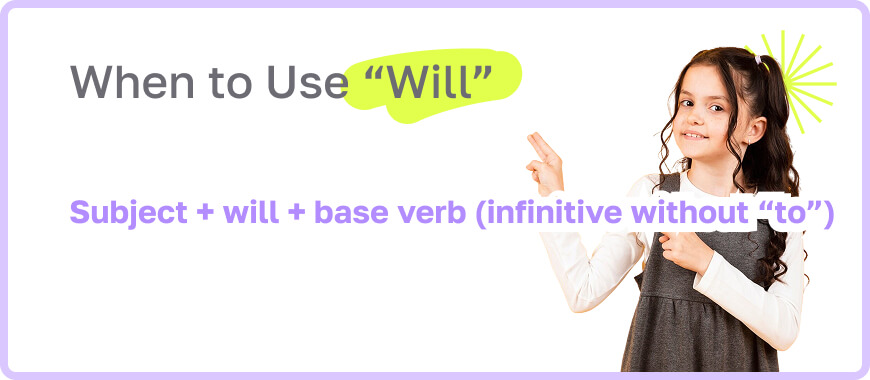
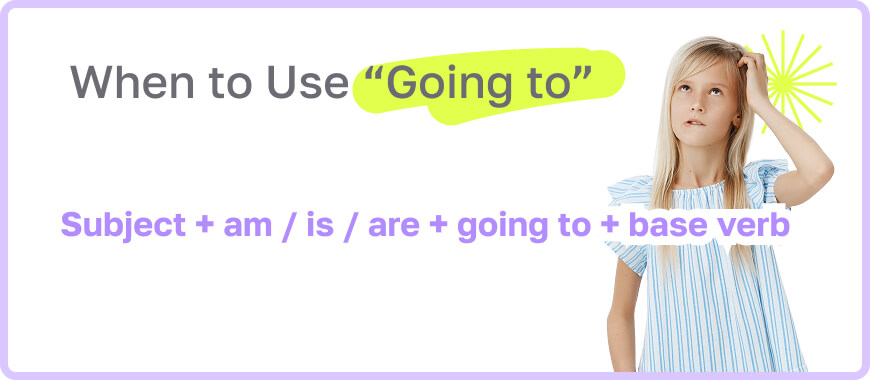



.jpg)

